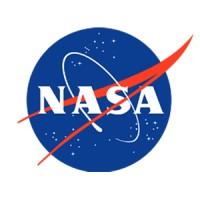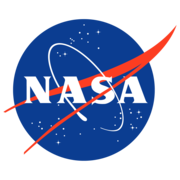NASA's Hubble Space Telescope Faces Setback with Gyroscope Malfunction
May 2, 2024, 3:39 pm

Location: United States, Maryland, Greenbelt
Employees: 10001+
Founded date: 1958
Total raised: $25.7B
Description at least 700 words
NASA's Hubble Space Telescope recently encountered a setback when it entered safe mode due to a persistent gyroscope malfunction. This issue, which occurred on April 23, caused the telescope to halt its science operations temporarily. Despite this setback, NASA assures that the telescope's operational health remains stable, with all instruments functioning properly.
The gyroscope malfunction affected the telescope's ability to measure turn rates and orientation accurately, prompting the automatic transition to safe mode. This is not the first time the Hubble Space Telescope has faced this issue, as a similar occurrence happened in November. NASA's team is actively working on troubleshooting efforts to rectify the gyro's erratic behavior.
As a contingency plan, engineers can configure the spacecraft to operate using only one functional gyro while the problematic unit is reserved for backup. Originally equipped with six new gyros in 2009, Hubble currently relies on three operational gyros for optimal performance. Despite the setback, the telescope can still conduct scientific observations with just one functional gyro.
NASA anticipates that Hubble will continue to make significant scientific contributions, especially in collaboration with upcoming observatories like the James Webb Space Telescope. The recent celebration of Hubble's 34th anniversary showcased a captivating image of the Little Dumbbell Nebula, also known as Messier 76, M76, or NGC 650/651.
The Little Dumbbell Nebula is classified as a planetary nebula, originating from the outward expansion of luminous gases released by a dying red giant star. Despite its name, it is unrelated to planets and gets its title from its resemblance to planetary bodies observed through early telescopes in the 1700s. The nebula displays a central bar structure encircled by a ring, with two lobes extending outward.
The ring was potentially created from material released by the dying star and likely influenced by a companion star's gravitational effects. The absence of a hypothetical companion star in the Hubble image suggests that the central star might have absorbed it. The main star eventually collapses into a white dwarf, reaching temperatures of up to 250,000 degrees Fahrenheit—24 times hotter than the Sun's surface.
Overall, despite the recent setback with the gyroscope malfunction, NASA remains optimistic about Hubble's future scientific endeavors. The telescope's ability to adapt and continue making groundbreaking discoveries in the realm of space exploration is a testament to its resilience and importance in the field of astronomy.
NASA's Hubble Space Telescope recently encountered a setback when it entered safe mode due to a persistent gyroscope malfunction. This issue, which occurred on April 23, caused the telescope to halt its science operations temporarily. Despite this setback, NASA assures that the telescope's operational health remains stable, with all instruments functioning properly.
The gyroscope malfunction affected the telescope's ability to measure turn rates and orientation accurately, prompting the automatic transition to safe mode. This is not the first time the Hubble Space Telescope has faced this issue, as a similar occurrence happened in November. NASA's team is actively working on troubleshooting efforts to rectify the gyro's erratic behavior.
As a contingency plan, engineers can configure the spacecraft to operate using only one functional gyro while the problematic unit is reserved for backup. Originally equipped with six new gyros in 2009, Hubble currently relies on three operational gyros for optimal performance. Despite the setback, the telescope can still conduct scientific observations with just one functional gyro.
NASA anticipates that Hubble will continue to make significant scientific contributions, especially in collaboration with upcoming observatories like the James Webb Space Telescope. The recent celebration of Hubble's 34th anniversary showcased a captivating image of the Little Dumbbell Nebula, also known as Messier 76, M76, or NGC 650/651.
The Little Dumbbell Nebula is classified as a planetary nebula, originating from the outward expansion of luminous gases released by a dying red giant star. Despite its name, it is unrelated to planets and gets its title from its resemblance to planetary bodies observed through early telescopes in the 1700s. The nebula displays a central bar structure encircled by a ring, with two lobes extending outward.
The ring was potentially created from material released by the dying star and likely influenced by a companion star's gravitational effects. The absence of a hypothetical companion star in the Hubble image suggests that the central star might have absorbed it. The main star eventually collapses into a white dwarf, reaching temperatures of up to 250,000 degrees Fahrenheit—24 times hotter than the Sun's surface.
Overall, despite the recent setback with the gyroscope malfunction, NASA remains optimistic about Hubble's future scientific endeavors. The telescope's ability to adapt and continue making groundbreaking discoveries in the realm of space exploration is a testament to its resilience and importance in the field of astronomy.
